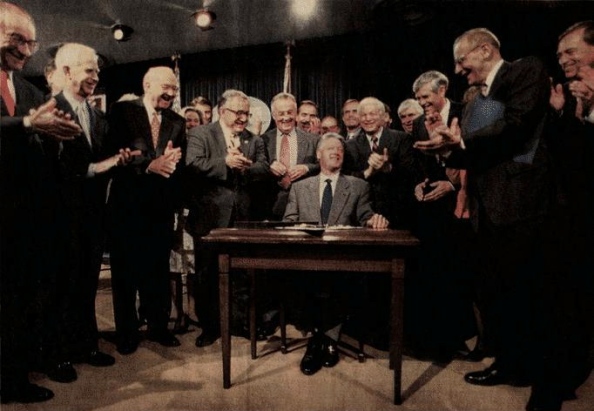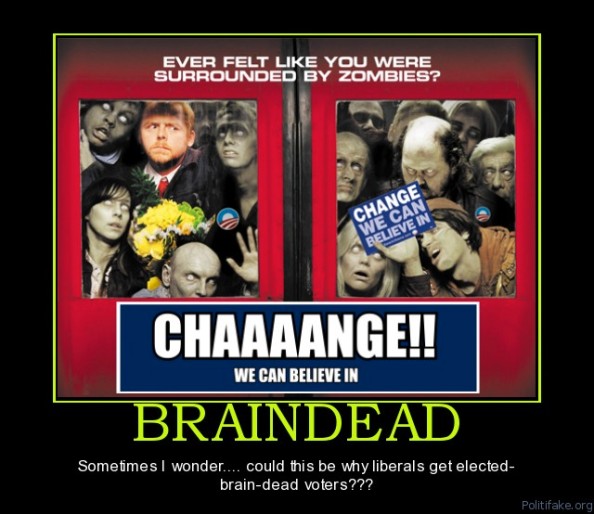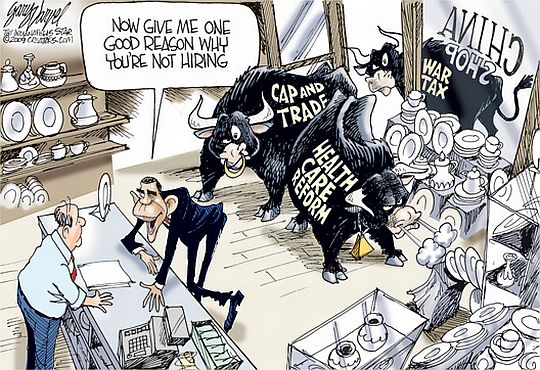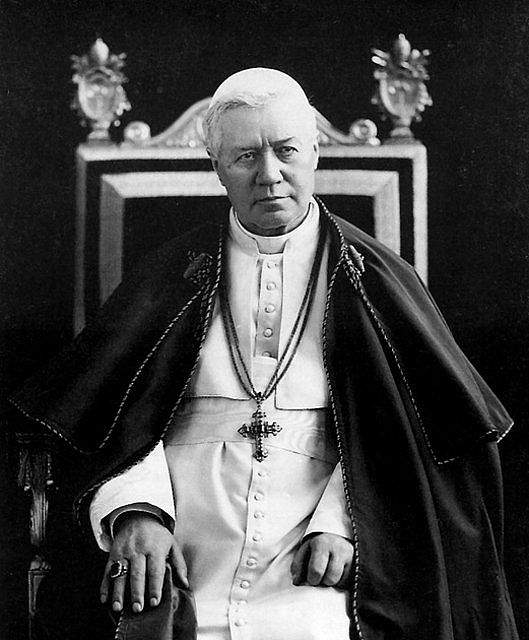Banking Cabal Gone Wild: How The U.S. Citizens Were Deceived About The Rothschild International “PAPER” Bail-In Regime: The Innocuous Corrupt Dodd-Frank Bill.
Posted on July 1, 2013
0

2013
Hearings continue taking place in the House and Senate to review what exactly was voted into law with the 2010 Wall Street Reform and Consumer Protection Act (the Dodd-Frank Act) even as the rules for implementing the law are still being written.
According to LaRouchePAC and EIR sources on Capitol Hill, there is little to no recognition of the key fact of Dodd-Frank. Namely, Title II of the Act to establish an Orderly Liquidation Authority, vests the FDIC with the authority to conduct a European-style bail-in.
The preamble to the Dodd-Frank Act claims “to protect the American taxpayer by ending bailouts.” This is done, however, through bail-in, a critical feature of the internationally established regime of what is called cross-border bank resolution.
Bail-in, in its simplest terms, is the inverse policy of what was done under Franklin D. Roosevelt’s Glass-Steagall Act and the 1933 Banking Act generally. Under bail-in the bank survives, the depositors do not. As is stated in an IMF review of the policy from April 2012, “The statutory bail-in power is intended to achieve a prompt recapitalization and restructuring of the distressed institution.”




Rothschild Czar Billy Clinton Repeals The Glass Steagall Act in 1999 allowing Banks to invest depositor’s hard earned cash in high risk bubbles.
Before this law goes into effect, as a result of any among a vast variety of financial crises waiting to happen, Dodd-Frank must be overridden by the passage of Glass-Steagall.
The 2010 Dodd-Frank Act must be nullified immediately by its repeal and the simultaneous passage of the Glass-Steagall Act as drafted in Senate Bill 985 and and House of Representatives Bill 129.



However, the routine corruption of the Congress is as old as the institution itself. What was done and can now be enacted under the new authorities established in Dodd-Frank’s Title II, is of a different class.

Standing In Front Of The President His Boss Had Killed.
The Executive Overview of the joint report states:
The financial crisis that began in 2007 has driven home the importance of an orderly resolution process for globally active, systemically important, financial institutions (G-SIFIs)… These strategies have been designed to enable large and complex cross-border firms to be resolved without threatening financial stability and without putting public funds at risk…

Rothschild Czar & Card Tricks For Corpratism Control Of The United States Of America In Flagrant Violation Of The United States Constitution.

As will be illustrated in the following section, any form of creditor with money in the bank, from $1 to $250,000 and everything above, can be converted from having their account immediately available to them, to becoming a stockholder.
As with the triggering of OLA, this can be done quite literally overnight.
To retrieve the value of what was formerly assumed to be the depositor’s account balance, the stock must be sold.
For example, a former depositor with an account balance of $250,000, who now owns that amount in bank stock, owns that amount of stock in a bank that just underwent a major, cross-border, government restructuring because it was in imminent distress.
The receiver, the FDIC, determines which values in the bank must be upheld in the interest of “financial stability,” and this undoubtedly includes financial derivatives, and other debt instruments, which, if sold off in the course of orderly liquidation would cause a panic.
The obvious question is, how much will the depositor be able to sell his stock for?

Part 1 Part II & Interview
UNSECURED CREDITORS:
According to the April 24, 2012 IMF report,14 conversion of bank debt to stock is an essential element of bail-in included in Dodd-Frank. “The contribution of new capital will come from debt conversion and/or issuance of new equity, with an elimination or significant dilution of the pre-bail in shareholders. …Some measures might be necessary to reduce the risk of a ‘death spiral’ in share prices.” In the language of Dodd-Frank, this will “ensure that unsecured creditors bear losses.”
Such a conversion of deposits into equity already had its test-run under the terms of bankruptcy reorganization of Bankia and four other Spanish banks earlier this year. The conditions of a July 2012 Memorandum of Understanding between the Troika (EC, ECB, and IMF) and Spain, resulted in over 1 million small depositors becoming stockholders in Bankia when they were sold “preferentes” (preferred stock) in exchange for their deposits. Following the conversion, the preferentes took an initial write-down of 30-70%. Soon after, they were converted into common stock originally valued at EU2 per share, which was further devalued to EU0.1 after the
March restructuring of Bankia.15
The likelihood of this write-down of assets is stated outright in the BOE-FDIC joint report and readily acknowledged otherwise.

Derivative Paper Bomb


Economist, Nouriel Roubini writes in an online briefing, Bank Resolution Regimes:

Richard Nixon
INTERNATIONAL FRAMEWORK IN PLACE:
They key issue taken up by Dodd-Frank in its drafting and passage was cross-border resolution of the so-called global systemically important financial institutions (also called GSIBs, or global systemically important banks in other locations).

Click To Enlarge

Pope Pius X
4 August 1903
– 20 August 1914
(11 years, 16 days) was the first Pope canonized since St. Pius V in 1672.
Posted on July 1, 2013
0

J.P. Morgan’s Jamie Dimon Staring Down The Barrel Of A Smoking Gun: Evidence Proves Massive Mortgage Fraud Against Americans!
DODD-FRANK KILLS:
HOW THE U.S. JOINED THE INTERNATIONAL BAIL-IN REGIME
Leandra Bernstein2013
Hearings continue taking place in the House and Senate to review what exactly was voted into law with the 2010 Wall Street Reform and Consumer Protection Act (the Dodd-Frank Act) even as the rules for implementing the law are still being written.
According to LaRouchePAC and EIR sources on Capitol Hill, there is little to no recognition of the key fact of Dodd-Frank. Namely, Title II of the Act to establish an Orderly Liquidation Authority, vests the FDIC with the authority to conduct a European-style bail-in.
- Dodd-Frank Damage Begins to Unfold
- Dodd-Frank is an Unconstitutional Disaster
- Dodd-Frank Act, Is Actually ~ The 2010 Full Employment Act for Lawyers, Accountants, and Consultants
The preamble to the Dodd-Frank Act claims “to protect the American taxpayer by ending bailouts.” This is done, however, through bail-in, a critical feature of the internationally established regime of what is called cross-border bank resolution.
Bail-in, in its simplest terms, is the inverse policy of what was done under Franklin D. Roosevelt’s Glass-Steagall Act and the 1933 Banking Act generally. Under bail-in the bank survives, the depositors do not. As is stated in an IMF review of the policy from April 2012, “The statutory bail-in power is intended to achieve a prompt recapitalization and restructuring of the distressed institution.”

Read the full text of the Glass-Steagall Act (a.k.a. the Banking Act of 1933)
In the case of resolving a distressed globally active, systemically important, financial institution (GSIFI), bank creditors, specifically those whose assets exceed the FDIC insurance cap, will be subject to expropriation.- This is not normal bankruptcy.
- Accounts and assets are seized and/or converted to stock under the resolution authority.
- The institution is prevented from failing.
- Values of securities are not written down through sale on the open market.
- And this is done to guarantee the continued operation of the financial institution and the “stability” of the financial system.
- Jeff Steinberg On the Repeal of Glass-Steagall By Billy Clinton In 1999: Banker’s Mechanism To Overload America With Debt Subservience!

This report provides the evidence, primarily using the text of laws, charters, and the language of the administrators of the bail-in regime, to demonstrate that the United States of America is being subject to the premeditated scheme of an international syndicate to establish laws and treaties contrary both to the interests of the United States, and the spirit and the law of the U.S. Constitution.

- The Dodd-Frank Act, as currently written, has no evident provision that would prevent the overall effect of mass economic deprivation of the targeted subjects, the American citizenry.
- Such deprivation across the spectrum of economic activity would invariably lead to a sharp increase in the nation’s death rate, as a direct consequence of the enactment of this law.
- If this Act is not nullified, the result of its enactment will be the mass destruction of U.S. citizens through economic means.
- The fact that this has not been stated openly, other than in the following report, does not improve the arguments of those who fail to annul this law.

Rothschild Czar Billy Clinton Repeals The Glass Steagall Act in 1999 allowing Banks to invest depositor’s hard earned cash in high risk bubbles.
- 1999 REPEAL OF GLASS-STEAGALL: Bill Clinton Opened The Door For Creating $Trillions Of Derivative Debt & Bailout
Before this law goes into effect, as a result of any among a vast variety of financial crises waiting to happen, Dodd-Frank must be overridden by the passage of Glass-Steagall.
The 2010 Dodd-Frank Act must be nullified immediately by its repeal and the simultaneous passage of the Glass-Steagall Act as drafted in Senate Bill 985 and and House of Representatives Bill 129.

ANGLO-AMERICAN RESOLUTION:
- As passed, Dodd-Frank took up 848 pages and contained 383,013 words.
- According to the financial law firm Davis Polk, as of July 2012 an additional 8,843 pages of rules were added, representing only 30% of the rules to-be-written.
- The estimate for the final length of the Act is 30,000 pages.2
- Additionally, the six largest banks in the U.S. spent $29.4 million lobbying Congress in 2010, and flooded Capitol Hill with about 3,000 lobbyists–a ratio of 5 lobbyists per 1 congressman.3
- Resident Obama Repeats the Falsehoods of the New York Times and Andrew Ross Sorkin on Restoring the Glass-Steagall Act
- The Dodd-Frank Wall Street Reform and Consumer Protection Act currently stands as the single longest bill ever passed by the U.S. government.4
- It has been argued that the length of the bill itself was intended to intimidate members of Congress.
- There has been public commentary suggesting that few congressmen even read the bill, but were cowed into voting for it strictly on the basis of party loyalty under a first-term President Barack Obama who kept his party in line using whatever means were at his disposal.5
- In the first House vote, not a single Republican voted for the bill.
- In the final House vote of 237-192, three Republicans joined the ayes and only 19 Democrats voted against the bill.
- In the final Senate vote, 55 Democrats were joined by 3 Republicans and both Independents to pass the bill which was then signed into law by President Obama on July 21, 2010.

- More of the implications of Dodd-Frank have been revealed, but only after its passage.
- There has been an inadequate response from members of the U.S. government who presumably voted for the Act, or failed to defeat it.
- Even after witnessing the fallout from the resurgent European crisis, little has been done.
- Moreover, for freshman members of Congress, there is a new wave of financial interests descending on Capitol Hill to scope out the best candidates for campaign contributions, as veteran members submit and pass bills literally written by financial institutions.6

However, the routine corruption of the Congress is as old as the institution itself. What was done and can now be enacted under the new authorities established in Dodd-Frank’s Title II, is of a different class.
- On December 10, 2012, a joint strategy paper was drafted by the Bank of England (BOE) and the Federal Deposit Insurance Corporation (FDIC) titled, Resolving Globally Active, Systemically Important, Financial Institutions.7
- The paper compares the resolution regime established by Title II’s Orderly Liquidation Authority (OLA) to the Prudent Regulation Authority (PRA), a similar resolution authority in the United Kingdom.
- The regime in the U.K. was established April 1, 2013 following the dismantling of the Financial Services Authority.
- Beginning in June the PRA will be overseen by Bank of Canada governor and former head of the Financial Stability Board, Mark Carney, when he becomes head of the Bank of England.8

Standing In Front Of The President His Boss Had Killed.
The Executive Overview of the joint report states:
The financial crisis that began in 2007 has driven home the importance of an orderly resolution process for globally active, systemically important, financial institutions (G-SIFIs)… These strategies have been designed to enable large and complex cross-border firms to be resolved without threatening financial stability and without putting public funds at risk…
- In the U.S., the strategy has been developed in the context of the powers provided by the Dodd-Frank Wall Street Reform and Consumer Protection Act of 2010.
- Such a strategy would apply a single receivership at the top-tier holding company, assign losses to shareholders and unsecured creditors of the holding company, and transfer sound operating subsidiaries to a new solvent entity or entities.9
- Prior to resolution, a financial entity is entitled to petition the U.S. District Court of the District of Columbia if it is believed that the decision to resolve is erroneous or capricious.
- But at the court level, such a decision is made, “On a strictly confidential basis, and without any prior public disclosure…”
- This means there is to be no disclosure to unsecured creditors,or other affected parties.
- Under the law, premature or “reckless” disclosure can result in fines up to $250,000, imprisonment for up to 5 years, or both. (Title II, Sec. 202, 1, A.)
- Moreover, if a creditor objects to resolution, they have a limited amount of time to petition for redress.
- For example, if a state government with its state workers’ pensions invested in the distressed institution, objects to the terms or the triggering of resolution and wishes to exempt its funds from bailing-in the institution, they have 24 hours to petition the courts.

Rothschild Czar & Card Tricks For Corpratism Control Of The United States Of America In Flagrant Violation Of The United States Constitution.
In June 2012 an official lawsuit was filed in the U.S. District Court of the District of Columbia challenging the constitutionality of the Dodd-Frank Act on a number of counts, including the failure to allow for due process of law.10
From the Introduction, Legislative frameworks for implementing the strategy:- Title I of the Dodd-Frank Act requires each G-SIFI to periodically submit to the FDIC and the Federal Reserve a resolution plan that must address the company’s plans for its rapid and orderly resolution under the U.S. Bankruptcy Code.11 …
- Title II of the Dodd-Frank Act provides the FDIC with new powers to resolve SIFIs by establishing the orderly liquidation authority (OLA).
- Under the OLA, the FDIC may be appointed receiver for any U.S. financial company that meets specified criteria, including being in default or in danger of default, and whose resolution under the U.S. Bankruptcy Code (or other relevant insolvency process) would likely create systemic instability.12
- Title II requires that the losses of any financial company placed into receivership will not be borne by taxpayers, but by common and preferred stockholders, debt holders, and other unsecured creditors, and that management responsible for the condition of the financial company will be replaced.
- Gov. Mitch Daniels: U.S. Debt Is Accumulating At A Terrifying Rate: Obama Prints $110 Billion Each MonthFor U.S. Taxpayers To Pay back!
- Once appointed receiver for a failed financial company, the FDIC would be required to carry out a resolution of the company in a manner that mitigates risk to financial stability and minimizes moral hazard.
- Any costs borne by the U.S. authorities in resolving the institution not paid from proceeds of the resolution will be recovered from the industry.

- The above statement assumes that the costs of resolution will be covered by those creditors slated to bear the losses as well as an Orderly Liquidation Fund to bear the administrative costs of resolution.
- What is further proposed for those creditors whose claims are not liquidated, is their conversion to shareholders, the debt becomes stock acting to prop up the value of the resolved institution.
- What would otherwise occur in bankruptcy, meting out claims to creditors based on priority, does not happen.
A crucial clarification of what constitutes a bank creditor was made in a March 28, 2013 review of the BOE-FDIC paper by chairwoman of the Public Banking Institute, Ellen Brown. Ellen 1 Ellen 2 In the course of explaining why the bail-in, confiscation of 40% of unsecured deposits in Cyprus was not a one-time event, she clarifies:Rather, the liquidation of the firm does not occur, it is kept operational, and is in that way bailed-in by its creditors.
- Although few depositors realize it, legally the banks owns the depositor’s funds as soon as they are put in the bank.
- Our money becomes the bank’s, and we become unsecured creditors holding IOUs or promises to pay. …
- Under the FDIC-BOE plan, our IOUs will be converted into “bank equity.” …
- With any luck we may be able to sell the stock to someone else, but when and at what price?13
As will be illustrated in the following section, any form of creditor with money in the bank, from $1 to $250,000 and everything above, can be converted from having their account immediately available to them, to becoming a stockholder.
As with the triggering of OLA, this can be done quite literally overnight.
To retrieve the value of what was formerly assumed to be the depositor’s account balance, the stock must be sold.
For example, a former depositor with an account balance of $250,000, who now owns that amount in bank stock, owns that amount of stock in a bank that just underwent a major, cross-border, government restructuring because it was in imminent distress.
The receiver, the FDIC, determines which values in the bank must be upheld in the interest of “financial stability,” and this undoubtedly includes financial derivatives, and other debt instruments, which, if sold off in the course of orderly liquidation would cause a panic.
- Winner Takes All: The Super-priority Status of Derivatives
The obvious question is, how much will the depositor be able to sell his stock for?
- It Can Happen Here: The Confiscation Scheme Planned for US and UK Depositors

Part 1 Part II & Interview
UNSECURED CREDITORS:
According to the April 24, 2012 IMF report,14 conversion of bank debt to stock is an essential element of bail-in included in Dodd-Frank. “The contribution of new capital will come from debt conversion and/or issuance of new equity, with an elimination or significant dilution of the pre-bail in shareholders. …Some measures might be necessary to reduce the risk of a ‘death spiral’ in share prices.” In the language of Dodd-Frank, this will “ensure that unsecured creditors bear losses.”
Such a conversion of deposits into equity already had its test-run under the terms of bankruptcy reorganization of Bankia and four other Spanish banks earlier this year. The conditions of a July 2012 Memorandum of Understanding between the Troika (EC, ECB, and IMF) and Spain, resulted in over 1 million small depositors becoming stockholders in Bankia when they were sold “preferentes” (preferred stock) in exchange for their deposits. Following the conversion, the preferentes took an initial write-down of 30-70%. Soon after, they were converted into common stock originally valued at EU2 per share, which was further devalued to EU0.1 after the
March restructuring of Bankia.15
The likelihood of this write-down of assets is stated outright in the BOE-FDIC joint report and readily acknowledged otherwise.
To capitalize the new operations–one or more new private entities–the FDIC expects that it will have to look to subordinated debt or even senior unsecured debt claims as the immediate source of capital. The original debt holders can thus expect that their claims will be written down to reflect any losses in the receivership of the parent that the shareholders cannot cover…Following the triggering of Dodd-Frank’s Title II authorities, and the FDIC taking receivership at the top tier parent holding company of a GSIFI, assets will be transferred to recapitalize the parent company, in its original and other incarnations, and written down.

Derivative Paper Bomb
PAPER, PAPER, PAPER, PAPER, PAPER, PAPER, PAPER, PAPER, PAPER, PAPER, PAPER, PAPER, PAPER, PAPER, PAPER, PAPER, PAPER, PAPER, PAPER, PAPER, PAPER, PAPER, PAPER, PAPER, PAPER, PAPER, PAPER, PAPER, PAPER, PAPER, PAPER, PAPER, PAPER, PAPER, PAPER, PAPER, PAPER, PAPER, PAPER, PAPER, PAPER, PAPER, PAPER, PAPER, PAPER, PAPER, PAPER, PAPER,
Obama’s Web Of Debt: Its The PAPER Derivatives Stupid.

- What Iceland Teaches Us: “Let Banks Fail”
- Last Lap Dance For Rothschild: Iceland’s Viking Victory Over The Matrix Banksters!
- Its Time To Get ICELANDIC On Rothschild: Interpol Arrest Warrant For Einarsson Sigurdur!
- Iceland Dismantles The Corrupt, Arrests 10 Rothschild Bankers, Then Issues Interpol Arrest Warrant For Rothschild Banker Sigurdur Einarsson!

- This is not simply a hair-cut to bond holders, creditors, and others, but a guarantee that those who are invested in the institution, with money in the depository branch of the institution (understood as depositors), will be made responsible for the continued operation of the institution.
- Depositors as well as creditors become financially responsible for keeping the institution open and operating, instead of being allowed to go bankrupt, as would be the case for a non-GSIFI.
- The depository and investment branches are, in this way, called upon equally to bail-in.
Economist, Nouriel Roubini writes in an online briefing, Bank Resolution Regimes:
- Under the existing legislation, the FDIC has the power to impose losses on unsecured creditors in the process of resolving failing banks.
- For example, the FDIC resolved Washington Mutual under the least-cost resolution method in 2008 and imposed serious losses on the unsecured creditors and uninsured depositors (deposit amount above USD 100,000).
- The Orderly Liquidation Authority (OLA) established under the Dodd-Frank Act further expands the resolution authority of FDIC.
- Subject to certain conditions, the FDIC now also has the powers to cherry-pick which assets and liabilities to transfer to a third party and treating similarly situated creditors differently, eg: favoring short-term creditors over long-term creditors or favoring operating creditors over lenders or bondholders.16
Capps Law: Ticking Time Bomb Inside Obamacare.

Richard Nixon
INTERNATIONAL FRAMEWORK IN PLACE:
They key issue taken up by Dodd-Frank in its drafting and passage was cross-border resolution of the so-called global systemically important financial institutions (also called GSIBs, or global systemically important banks in other locations).

Click To Enlarge
- Bankers With Out Boundaries [NWO] ~ Obama’s French Felon Nadhmi Auchi & French Felon George Soros!
- This obviously necessitates cooperation with other nations.
- Provisions of Dodd-Frank explicitly authorize this coordination with foreign authorities to take action to resolve those institutions whose collapse threatens financial stability.
- As is stated in Title II, Sec. 210, N, the FDIC, acting as the receiver for such a financial institution in distress, “shall coordinate, to the maximum extent possible, with the appropriate foreign financial authorities regarding the orderly liquidation of any covered financial company that has assets or operations in a country other than the United States.”
- RollingStone The Fed’s aka; Rothschild’s Magic Money-Printing Machine: Usurping U.S. Gold Backed Currency!
- Chairman of the FDIC, Martin Gruenberg, elaborated on the cross-border strategies codified under Dodd-Frank in a June 9, 2012 speech in Chicago.
- He stated that since the passage of Dodd-Frank, the FDIC has taken action to carry out its new resolution authorities, including increasingly coordinating cross-border resolution with foreign regulators, in particular the United Kingdom, where “the operations of U.S. SIFIs are concentrated.”

Pope Pius X
4 August 1903
– 20 August 1914
(11 years, 16 days) was the first Pope canonized since St. Pius V in 1672.
- Pope Benedict The XVI’s Historic Christmas Message To The ‘City Of London’s’ Financial Times.
- Roman Catholic Popes Have All Denounced Free Mason’s New World Order: If You Believe Otherwise You’re A Victim Of The Banker’s Propaganda.
- As I mentioned earlier, the type of firm we would need to resolve will likely have significant international operations.
- This creates a number of challenges…
- The FDIC has participated in the work of the Financial Stability Board through its membership on the Resolution Steering Group, which produced the Key Attributes of Effective Resolution Regimes for Financial Institutions.
- We have also participated in the Cross-border Crisis Management Group and a number of technical working groups, and have co-chaired the Basel Committee’s Cross-border Bank Resolution Group since its inception in 2007. …






 Sat Mar 23, 2024 11:33 pm by globalturbo
Sat Mar 23, 2024 11:33 pm by globalturbo



















 Dodd-Frank And Wall Street Has Never Been More Corrupt
Dodd-Frank And Wall Street Has Never Been More Corrupt



